 Two tiny, recently-discovered satellites of dwarf planet Pluto have new named ratified by the International Astronomical Union; P4 is renamed Kerberos and P5 is renamed Styx. The names – related to the “underworld” theme that has governed the naming of Pluto and its moons to date – overlooks a popular online vote that suggested one of the moons should be named Vulcan, after Mr. Spock’s home planet in Star Trek. Kerberos, discoverd in 2011, is believed to be approximately 20 miles in diameter and orbits Pluto at a distance of roughly 37,000 miles. Styx, first sighted in 2012, is even smaller, with an estimated diameter of 15 miles, orbiting only 1,200 miles from Pluto, making it the innermost satellite (a distinction previously held by Pluto’s near-twin, Charon). NASA’s New Horizons spacecraft will have the opportunity to see the new moons up close when it does a flyby of Pluto in 2015.
Two tiny, recently-discovered satellites of dwarf planet Pluto have new named ratified by the International Astronomical Union; P4 is renamed Kerberos and P5 is renamed Styx. The names – related to the “underworld” theme that has governed the naming of Pluto and its moons to date – overlooks a popular online vote that suggested one of the moons should be named Vulcan, after Mr. Spock’s home planet in Star Trek. Kerberos, discoverd in 2011, is believed to be approximately 20 miles in diameter and orbits Pluto at a distance of roughly 37,000 miles. Styx, first sighted in 2012, is even smaller, with an estimated diameter of 15 miles, orbiting only 1,200 miles from Pluto, making it the innermost satellite (a distinction previously held by Pluto’s near-twin, Charon). NASA’s New Horizons spacecraft will have the opportunity to see the new moons up close when it does a flyby of Pluto in 2015.
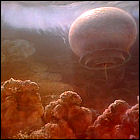 The second episode of Carl Sagan’s groundbreaking science documentary series Cosmos premieres on PBS. A popular history of science and scientific theory vs. tradition and superstition, segueing into Sagan’s field of expertise (astrophysics), Cosmos is a major milestone in American documentary filmmaking and the popularization of science and the scientific method (and makes an instant celebrity out of Sagan).
The second episode of Carl Sagan’s groundbreaking science documentary series Cosmos premieres on PBS. A popular history of science and scientific theory vs. tradition and superstition, segueing into Sagan’s field of expertise (astrophysics), Cosmos is a major milestone in American documentary filmmaking and the popularization of science and the scientific method (and makes an instant celebrity out of Sagan).
 The third episode of Carl Sagan’s groundbreaking science documentary series Cosmos premieres on PBS. A popular history of science and scientific theory vs. tradition and superstition, segueing into Sagan’s field of expertise (astrophysics), Cosmos is a major milestone in American documentary filmmaking and the popularization of science and the scientific method (and makes an instant celebrity out of Sagan).
The third episode of Carl Sagan’s groundbreaking science documentary series Cosmos premieres on PBS. A popular history of science and scientific theory vs. tradition and superstition, segueing into Sagan’s field of expertise (astrophysics), Cosmos is a major milestone in American documentary filmmaking and the popularization of science and the scientific method (and makes an instant celebrity out of Sagan).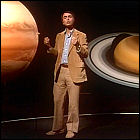 The fourth episode of Carl Sagan’s groundbreaking science documentary series Cosmos premieres on PBS. A popular history of science and scientific theory vs. tradition and superstition, segueing into Sagan’s field of expertise (astrophysics), Cosmos is a major milestone in American documentary filmmaking and the popularization of science and the scientific method (and makes an instant celebrity out of Sagan).
The fourth episode of Carl Sagan’s groundbreaking science documentary series Cosmos premieres on PBS. A popular history of science and scientific theory vs. tradition and superstition, segueing into Sagan’s field of expertise (astrophysics), Cosmos is a major milestone in American documentary filmmaking and the popularization of science and the scientific method (and makes an instant celebrity out of Sagan). The fifth episode of Carl Sagan’s groundbreaking science documentary series Cosmos premieres on PBS. A popular history of science and scientific theory vs. tradition and superstition, segueing into Sagan’s field of expertise (astrophysics), Cosmos is a major milestone in American documentary filmmaking and the popularization of science and the scientific method (and makes an instant celebrity out of Sagan).
The fifth episode of Carl Sagan’s groundbreaking science documentary series Cosmos premieres on PBS. A popular history of science and scientific theory vs. tradition and superstition, segueing into Sagan’s field of expertise (astrophysics), Cosmos is a major milestone in American documentary filmmaking and the popularization of science and the scientific method (and makes an instant celebrity out of Sagan). The sixth episode of Carl Sagan’s groundbreaking science documentary series Cosmos premieres on PBS. A popular history of science and scientific theory vs. tradition and superstition, segueing into Sagan’s field of expertise (astrophysics), Cosmos is a major milestone in American documentary filmmaking and the popularization of science and the scientific method (and makes an instant celebrity out of Sagan).
The sixth episode of Carl Sagan’s groundbreaking science documentary series Cosmos premieres on PBS. A popular history of science and scientific theory vs. tradition and superstition, segueing into Sagan’s field of expertise (astrophysics), Cosmos is a major milestone in American documentary filmmaking and the popularization of science and the scientific method (and makes an instant celebrity out of Sagan). The seventh episode of Carl Sagan’s groundbreaking science documentary series Cosmos premieres on PBS. A popular history of science and scientific theory vs. tradition and superstition, segueing into Sagan’s field of expertise (astrophysics), Cosmos is a major milestone in American documentary filmmaking and the popularization of science and the scientific method (and makes an instant celebrity out of Sagan).
The seventh episode of Carl Sagan’s groundbreaking science documentary series Cosmos premieres on PBS. A popular history of science and scientific theory vs. tradition and superstition, segueing into Sagan’s field of expertise (astrophysics), Cosmos is a major milestone in American documentary filmmaking and the popularization of science and the scientific method (and makes an instant celebrity out of Sagan). The eighth episode of Carl Sagan’s groundbreaking science documentary series Cosmos premieres on PBS. A popular history of science and scientific theory vs. tradition and superstition, segueing into Sagan’s field of expertise (astrophysics), Cosmos is a major milestone in American documentary filmmaking and the popularization of science and the scientific method (and makes an instant celebrity out of Sagan).
The eighth episode of Carl Sagan’s groundbreaking science documentary series Cosmos premieres on PBS. A popular history of science and scientific theory vs. tradition and superstition, segueing into Sagan’s field of expertise (astrophysics), Cosmos is a major milestone in American documentary filmmaking and the popularization of science and the scientific method (and makes an instant celebrity out of Sagan). The ninth episode of Carl Sagan’s groundbreaking science documentary series Cosmos premieres on PBS. A popular history of science and scientific theory vs. tradition and superstition, segueing into Sagan’s field of expertise (astrophysics), Cosmos is a major milestone in American documentary filmmaking and the popularization of science and the scientific method (and makes an instant celebrity out of Sagan).
The ninth episode of Carl Sagan’s groundbreaking science documentary series Cosmos premieres on PBS. A popular history of science and scientific theory vs. tradition and superstition, segueing into Sagan’s field of expertise (astrophysics), Cosmos is a major milestone in American documentary filmmaking and the popularization of science and the scientific method (and makes an instant celebrity out of Sagan). The tenth episode of Carl Sagan’s groundbreaking science documentary series Cosmos premieres on PBS. A popular history of science and scientific theory vs. tradition and superstition, segueing into Sagan’s field of expertise (astrophysics), Cosmos is a major milestone in American documentary filmmaking and the popularization of science and the scientific method (and makes an instant celebrity out of Sagan).
The tenth episode of Carl Sagan’s groundbreaking science documentary series Cosmos premieres on PBS. A popular history of science and scientific theory vs. tradition and superstition, segueing into Sagan’s field of expertise (astrophysics), Cosmos is a major milestone in American documentary filmmaking and the popularization of science and the scientific method (and makes an instant celebrity out of Sagan). The 11th episode of Carl Sagan’s groundbreaking science documentary series Cosmos premieres on PBS. A popular history of science and scientific theory vs. tradition and superstition, segueing into Sagan’s field of expertise (astrophysics), Cosmos is a major milestone in American documentary filmmaking and the popularization of science and the scientific method (and makes an instant celebrity out of Sagan).
The 11th episode of Carl Sagan’s groundbreaking science documentary series Cosmos premieres on PBS. A popular history of science and scientific theory vs. tradition and superstition, segueing into Sagan’s field of expertise (astrophysics), Cosmos is a major milestone in American documentary filmmaking and the popularization of science and the scientific method (and makes an instant celebrity out of Sagan).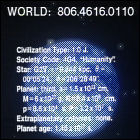 The 12th episode of Carl Sagan’s groundbreaking science documentary series Cosmos premieres on PBS. A popular history of science and scientific theory vs. tradition and superstition, segueing into Sagan’s field of expertise (astrophysics), Cosmos is a major milestone in American documentary filmmaking and the popularization of science and the scientific method (and makes an instant celebrity out of Sagan).
The 12th episode of Carl Sagan’s groundbreaking science documentary series Cosmos premieres on PBS. A popular history of science and scientific theory vs. tradition and superstition, segueing into Sagan’s field of expertise (astrophysics), Cosmos is a major milestone in American documentary filmmaking and the popularization of science and the scientific method (and makes an instant celebrity out of Sagan). The 13th and final episode of Carl Sagan’s groundbreaking science documentary series Cosmos premieres on PBS. A popular history of science and scientific theory vs. tradition and superstition, segueing into Sagan’s field of expertise (astrophysics), Cosmos is a major milestone in American documentary filmmaking and the popularization of science and the scientific method (and makes an instant celebrity out of Sagan).
The 13th and final episode of Carl Sagan’s groundbreaking science documentary series Cosmos premieres on PBS. A popular history of science and scientific theory vs. tradition and superstition, segueing into Sagan’s field of expertise (astrophysics), Cosmos is a major milestone in American documentary filmmaking and the popularization of science and the scientific method (and makes an instant celebrity out of Sagan).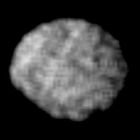 A team of American astronomers discovers what they believe is a third moon of Neptune from ground-based telescope observations, but S/1981N1 isn’t seen again for several years, so the discovery is left in the “unconfirmed” category…until it is next seen by Voyager 2 in 1989, confirming the original sighting many years later. In 1991, the International Astronomical Union will name this moon Larissa. (Voyager 2 photo of Larissa shown)
A team of American astronomers discovers what they believe is a third moon of Neptune from ground-based telescope observations, but S/1981N1 isn’t seen again for several years, so the discovery is left in the “unconfirmed” category…until it is next seen by Voyager 2 in 1989, confirming the original sighting many years later. In 1991, the International Astronomical Union will name this moon Larissa. (Voyager 2 photo of Larissa shown) The first edition of the non-fiction-with-science-fiction-short-stories anthology “
The first edition of the non-fiction-with-science-fiction-short-stories anthology “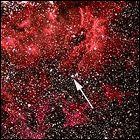 Astronomers both amateur and professional glimpse the first supernova to occur in the age of modern science. Given the name Supernova 1987A, the huge burst of light – visible to the naked eye in Earth’s southern hemisphere by the early summer months of 1987 before it begins fading out – is a collapsing star on the edge of the Tarantula Nebula. The star previously seen in that location is a blue supergiant, which wasn’t a likely candidate to go nova according to the existing theories of stellar evolution at the time. In the 1990s, the slowly expanding ring of debris rushing outward from Supernova 1987A becomes a favorite observation target for the Hubble Space Telescope. The supernova is more than 150,000 light years away from Earth’s solar system in the direction of the Large Magellenic Cloud.
Astronomers both amateur and professional glimpse the first supernova to occur in the age of modern science. Given the name Supernova 1987A, the huge burst of light – visible to the naked eye in Earth’s southern hemisphere by the early summer months of 1987 before it begins fading out – is a collapsing star on the edge of the Tarantula Nebula. The star previously seen in that location is a blue supergiant, which wasn’t a likely candidate to go nova according to the existing theories of stellar evolution at the time. In the 1990s, the slowly expanding ring of debris rushing outward from Supernova 1987A becomes a favorite observation target for the Hubble Space Telescope. The supernova is more than 150,000 light years away from Earth’s solar system in the direction of the Large Magellenic Cloud. Astronomers on Earth discover a comet like none seen before: having flown close to Jupiter in July 1992, the comet has broken into multiple pieces in a configuration that its discoverers call “a string of pearls.” Calculations of the orbit of the newly detected comet, named Shoemaker-Levy 9 after the team that discovered it, reveal something stunning: the orbit of the fragments will bring them back to Jupiter in just over a year, at which point they are expected to collide with the planet rather than pass it by or go into orbit. Not only does this give Earth-based astronomers time to coordinate observations, but NASA has an ace in the hole: the entire event will be witnessed by the unmanned Galileo probe as it makes its final approach to the giant planet.
Astronomers on Earth discover a comet like none seen before: having flown close to Jupiter in July 1992, the comet has broken into multiple pieces in a configuration that its discoverers call “a string of pearls.” Calculations of the orbit of the newly detected comet, named Shoemaker-Levy 9 after the team that discovered it, reveal something stunning: the orbit of the fragments will bring them back to Jupiter in just over a year, at which point they are expected to collide with the planet rather than pass it by or go into orbit. Not only does this give Earth-based astronomers time to coordinate observations, but NASA has an ace in the hole: the entire event will be witnessed by the unmanned Galileo probe as it makes its final approach to the giant planet.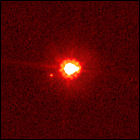 Astronomers at Palomar Observatory discover a body beyond Neptune’s orbit that initial observations show is larger than Pluto. Eris is quickly dubbed the tenth planet by the media and the scientific community, and it is later found to have a small moon of its own in a close orbit, which is later named Dysnomia. But events overtake Eris and Dysnomia before the science textbooks have a chance to be rewritten to include a tenth planet: Eris becomes a case study in an ongoing debate within the International Astronomical Union about the definition of a planet. In 2006, the IAU will establish a set of parameters which determine that Eris isn’t a planet – and then rewrites the history books by deciding that Pluto isn’t either.
Astronomers at Palomar Observatory discover a body beyond Neptune’s orbit that initial observations show is larger than Pluto. Eris is quickly dubbed the tenth planet by the media and the scientific community, and it is later found to have a small moon of its own in a close orbit, which is later named Dysnomia. But events overtake Eris and Dysnomia before the science textbooks have a chance to be rewritten to include a tenth planet: Eris becomes a case study in an ongoing debate within the International Astronomical Union about the definition of a planet. In 2006, the IAU will establish a set of parameters which determine that Eris isn’t a planet – and then rewrites the history books by deciding that Pluto isn’t either.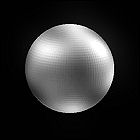 Scientists are already aware that Pluto is really cold, but recent observations suggest that it’s even colder than they had imagined. New radio telescope measurements of Pluto’s surface indicate that it’s a brisk -382 degrees Fahrenheit (scientists had earlier estimated a positively summery -364). Part of the reason for the slight chill in the air – if indeed there was any there – is that Pluto is on the outbound train. The tiny planet’s highly inclined orbit isn’t centered around the sun, while the solar system’s other worlds are more or less centered; part of Pluto’s orbit carries it further away from the sun and “under” the plane shared by the other planets. Curiously enough, however, the surface of Charon – Pluto’s nearly-identical-twin moon – is determined to be warmer than Pluto itself. The readings are taken by the Submillimeter Array in Hawaii by astronomers at the Harvard-Smithsonian Center for Astrophysics.
Scientists are already aware that Pluto is really cold, but recent observations suggest that it’s even colder than they had imagined. New radio telescope measurements of Pluto’s surface indicate that it’s a brisk -382 degrees Fahrenheit (scientists had earlier estimated a positively summery -364). Part of the reason for the slight chill in the air – if indeed there was any there – is that Pluto is on the outbound train. The tiny planet’s highly inclined orbit isn’t centered around the sun, while the solar system’s other worlds are more or less centered; part of Pluto’s orbit carries it further away from the sun and “under” the plane shared by the other planets. Curiously enough, however, the surface of Charon – Pluto’s nearly-identical-twin moon – is determined to be warmer than Pluto itself. The readings are taken by the Submillimeter Array in Hawaii by astronomers at the Harvard-Smithsonian Center for Astrophysics. Astronomers put the red planet on red alert after predicting 1-in-75 odds for an asteroid to collide with Mars on or near January 30th. The asteroid, discovered in November 2007, is on a trajectory that poses no threat to Earth but has better-than-usual odds of packing quite a wallop for Mars. The impact, if it does happen, could take place on the equator, near the Opportunity rover’s stomping (or, perhaps, roving) grounds, though NASA says it would pose no risk to Opportunity. A crater as large as Arizona’s Meteor Crater could be carved out of the Martian surface by any direct hit that does happen. Scientists prepare to watch the event with keen interest, as this event would be potentially cataclysmic if Earth was in danger, but provides a once-in-a-lifetime opportunity for observation on Mars.
Astronomers put the red planet on red alert after predicting 1-in-75 odds for an asteroid to collide with Mars on or near January 30th. The asteroid, discovered in November 2007, is on a trajectory that poses no threat to Earth but has better-than-usual odds of packing quite a wallop for Mars. The impact, if it does happen, could take place on the equator, near the Opportunity rover’s stomping (or, perhaps, roving) grounds, though NASA says it would pose no risk to Opportunity. A crater as large as Arizona’s Meteor Crater could be carved out of the Martian surface by any direct hit that does happen. Scientists prepare to watch the event with keen interest, as this event would be potentially cataclysmic if Earth was in danger, but provides a once-in-a-lifetime opportunity for observation on Mars.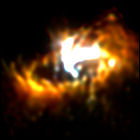 NASA reveals that its Boeing-747-mounted SOFIA (Stratospheric Observatory for Infrared Astronomy) telescope, during a 2011 flight in which its sensitive infrared sensors were aimed at the center of the Milky Way galaxy, captured an image of the super-massive black hole at the heart of the galaxy. A disc of dust and gas circling the center of the galaxy – seven light years across – lights up the image. The black hole is believed to have a mass of over four million times that of Earth’s sun.
NASA reveals that its Boeing-747-mounted SOFIA (Stratospheric Observatory for Infrared Astronomy) telescope, during a 2011 flight in which its sensitive infrared sensors were aimed at the center of the Milky Way galaxy, captured an image of the super-massive black hole at the heart of the galaxy. A disc of dust and gas circling the center of the galaxy – seven light years across – lights up the image. The black hole is believed to have a mass of over four million times that of Earth’s sun. To allay public fears that the next level might not be reached, NASA offers an explanation for an enigmatic 2010 image from the Hubble Space Telescope, showing a galaxy cluster, Abell 68, approximately 2,000,000,000 light years away. In the middle of that cluster, however, is what appears to be an alien from the video game Space Invaders. NASA explains that it’s a visual artifact of gravitational lensing caused by the gravity influence of the foreground galaxies upon the light of galaxies further away in the image. Earth breathes easy once more.
To allay public fears that the next level might not be reached, NASA offers an explanation for an enigmatic 2010 image from the Hubble Space Telescope, showing a galaxy cluster, Abell 68, approximately 2,000,000,000 light years away. In the middle of that cluster, however, is what appears to be an alien from the video game Space Invaders. NASA explains that it’s a visual artifact of gravitational lensing caused by the gravity influence of the foreground galaxies upon the light of galaxies further away in the image. Earth breathes easy once more. Two tiny, recently-discovered satellites of dwarf planet Pluto have new named ratified by the International Astronomical Union; P4 is renamed Kerberos and P5 is renamed Styx. The names – related to the “underworld” theme that has governed the naming of Pluto and its moons to date – overlooks a popular online vote that suggested one of the moons should be named Vulcan, after Mr. Spock’s home planet in Star Trek. Kerberos, discoverd in 2011, is believed to be approximately 20 miles in diameter and orbits Pluto at a distance of roughly 37,000 miles. Styx, first sighted in 2012, is even smaller, with an estimated diameter of 15 miles, orbiting only 1,200 miles from Pluto, making it the innermost satellite (a distinction previously held by Pluto’s near-twin, Charon). NASA’s New Horizons spacecraft will have the opportunity to see the new moons up close when it does a flyby of Pluto in 2015.
Two tiny, recently-discovered satellites of dwarf planet Pluto have new named ratified by the International Astronomical Union; P4 is renamed Kerberos and P5 is renamed Styx. The names – related to the “underworld” theme that has governed the naming of Pluto and its moons to date – overlooks a popular online vote that suggested one of the moons should be named Vulcan, after Mr. Spock’s home planet in Star Trek. Kerberos, discoverd in 2011, is believed to be approximately 20 miles in diameter and orbits Pluto at a distance of roughly 37,000 miles. Styx, first sighted in 2012, is even smaller, with an estimated diameter of 15 miles, orbiting only 1,200 miles from Pluto, making it the innermost satellite (a distinction previously held by Pluto’s near-twin, Charon). NASA’s New Horizons spacecraft will have the opportunity to see the new moons up close when it does a flyby of Pluto in 2015.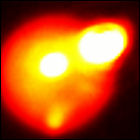 Astronomers using the Keck Observatory’s Hawaii-based telescopes and near-infrared cameras capture an image of a devastating volcanic eruption on Io, one of Jupiter’s largest moons (and known since 1979 to be very volcanically active). The eruption, unleashing enough molten material to reshape hundreds of square miles of Io’s surface, also reveals that the material erupted is hotter than any eruption in Earth’s recorded history. This is the most violent eruption seen to date in the solar system, and caps off two weeks of intense activity observed by the astronomers.
Astronomers using the Keck Observatory’s Hawaii-based telescopes and near-infrared cameras capture an image of a devastating volcanic eruption on Io, one of Jupiter’s largest moons (and known since 1979 to be very volcanically active). The eruption, unleashing enough molten material to reshape hundreds of square miles of Io’s surface, also reveals that the material erupted is hotter than any eruption in Earth’s recorded history. This is the most violent eruption seen to date in the solar system, and caps off two weeks of intense activity observed by the astronomers. JAXA, the Japanese Space Agency, launches the ASTRO-H X-ray observatory satellite, nicknamed Hitomi, from Tanegashima Space Center. Carrying equipment provided by NASA and the Canadian Space Agency, Hitomi is intended to remain operational for three years, conducting X-ray astronomy from low Earth orbit. Though the launch proceeds without apparent problems, major technical issues will prevent Hitomi from fulfilling its mission objectives.
JAXA, the Japanese Space Agency, launches the ASTRO-H X-ray observatory satellite, nicknamed Hitomi, from Tanegashima Space Center. Carrying equipment provided by NASA and the Canadian Space Agency, Hitomi is intended to remain operational for three years, conducting X-ray astronomy from low Earth orbit. Though the launch proceeds without apparent problems, major technical issues will prevent Hitomi from fulfilling its mission objectives.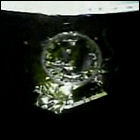 Japan’s Hitomi satellite, launched in February on a three-year X-ray astronomy mission, suddenly breaks contact with JAXA ground controllers when they begin power-up and checkout procedures. Only brief telemetry signals are received from Hitomi before it falls silent. JAXA initiates emergency procedures to contact Hitomi and diagnose the problem, though some telescopic observations from Earth indicate that pieces of the spacecraft have fallen away from the spacecraft itself.
Japan’s Hitomi satellite, launched in February on a three-year X-ray astronomy mission, suddenly breaks contact with JAXA ground controllers when they begin power-up and checkout procedures. Only brief telemetry signals are received from Hitomi before it falls silent. JAXA initiates emergency procedures to contact Hitomi and diagnose the problem, though some telescopic observations from Earth indicate that pieces of the spacecraft have fallen away from the spacecraft itself.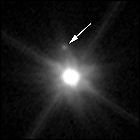 Astronomers reveal that Makemake, an icy dwarf planet orbiting in the distant Kuiper Belt region of the solar system, has a moon, first spotted in 2015 by a team using the Hubble Space Telescope. (The news comes just days after the 26th anniversary of Hubble’s launch.) With an estimated diameter of 100 miles (compared to the 870 mile diameter of its parent body), the satellite orbits Makemake at a distance of 13,000 miles, taking twelve days to complete one orbit. Previous observations failed to pick up on the dark, dim body due to the relatively bright glare of Makemake itself.
Astronomers reveal that Makemake, an icy dwarf planet orbiting in the distant Kuiper Belt region of the solar system, has a moon, first spotted in 2015 by a team using the Hubble Space Telescope. (The news comes just days after the 26th anniversary of Hubble’s launch.) With an estimated diameter of 100 miles (compared to the 870 mile diameter of its parent body), the satellite orbits Makemake at a distance of 13,000 miles, taking twelve days to complete one orbit. Previous observations failed to pick up on the dark, dim body due to the relatively bright glare of Makemake itself.  JAXA, the Japanese Space Agency, declares the Hitomi X-ray astronomy satellite a total loss, having lost all contact with it. Though the diagnosis of the evidence to date is ongoing, engineers conclude from the available data that Hitomi entered an uncontrolled spin and broke up in orbit. JAXA offers apologies not only to other countries’ space agencies who supplied equipment for Hitomi, as well as to astronomers who had hoped to use the satellite.
JAXA, the Japanese Space Agency, declares the Hitomi X-ray astronomy satellite a total loss, having lost all contact with it. Though the diagnosis of the evidence to date is ongoing, engineers conclude from the available data that Hitomi entered an uncontrolled spin and broke up in orbit. JAXA offers apologies not only to other countries’ space agencies who supplied equipment for Hitomi, as well as to astronomers who had hoped to use the satellite. NASA’s Hubble Space Telescope confirms the observations of Earthbound astronomers with high-powered telescopes: a new dark atmospheric feature has emerged on the planet Neptune, signifying a major new storm system in the planet’s atmosphere. The new vortex feature emerges near the south polar area of Neptune, and was first observed by telescope in 2015.
NASA’s Hubble Space Telescope confirms the observations of Earthbound astronomers with high-powered telescopes: a new dark atmospheric feature has emerged on the planet Neptune, signifying a major new storm system in the planet’s atmosphere. The new vortex feature emerges near the south polar area of Neptune, and was first observed by telescope in 2015. Pioneering astronomer Vera Rubin, whose research led to the discovery of dark matter, dies at the age of 88. In the 1960s and ’70s, Rubin found that the rate of galaxies’ rotation could not be accounted for unless galaxies contained, on average, ten times more mass than could be distributed among the visible stars in that galaxy. This research led her to propose the theory of dark matter in the 1970s, though she tried for many years to find – or at least rule out – any other possible explanations to the galaxy rotation problem.
Pioneering astronomer Vera Rubin, whose research led to the discovery of dark matter, dies at the age of 88. In the 1960s and ’70s, Rubin found that the rate of galaxies’ rotation could not be accounted for unless galaxies contained, on average, ten times more mass than could be distributed among the visible stars in that galaxy. This research led her to propose the theory of dark matter in the 1970s, though she tried for many years to find – or at least rule out – any other possible explanations to the galaxy rotation problem.